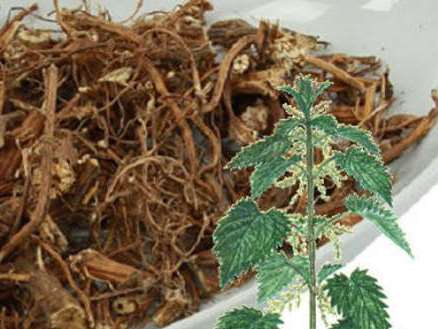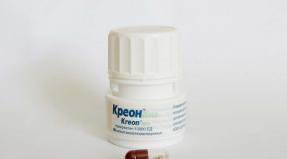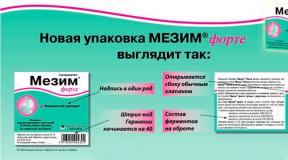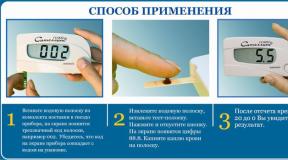What to do when your legs hurt with diabetes?
Pain in the legs in diabetes is a common problem, which with a high degree of probability indicates the development of complications. Given the serious risk of loss of limbs and other complications, this symptom is not recommended to be ignored. That is why you need to know everything about what to do if your legs hurt with diabetes.
Symptoms and types of foot diseases in diabetics
If your legs hurt with diabetes, this is far from the only symptom. First of all, attention is drawn to the dryness of the skin, which creams cannot cope with. Another category of signs are peeling, as well as itching of the skin. Type 2 diabetes pain symptoms are associated with:
- excessive formation of calluses;
- hair loss in the shins (most often found in men);
- change in shape and thickening of the nail plates;
- swelling of the ankles;
- change in skin color to white and excessive coldness of the cover.
In addition, pain in the leg is associated with the activity of a fungal infection, numbness, impaired tactile, thermal and other types of sensitivity. Such changes can develop directly in the foot under the influence of a number of factors. For example, and foot, trophic ulcers, angiopathy and others. Occasionally, more rare and specific forms may occur, such as thumb involvement in type 2 diabetes.
Why do my legs hurt with diabetes?
In order to understand the causes of leg pain in diabetes, it will be necessary to understand in more detail the causes of this condition. The extremities suffer because the nerve fibers are affected by chronically elevated blood sugar, which has the effect of stopping the exercise of impulses. This leads to the fact that the legs lose their usual degree of sensitivity, and diabetic neuropathy is formed. The causes of this pathology may be damage to the limbs and other problematic conditions.
The blood vessels that feed the legs can become clogged due to the formation of a blood clot (or rather a blood clot) or atherosclerosis. The so-called oxygen starvation of tissues begins, namely ischemia. With diabetes, the legs hurt very much in this case, and usually this symptomatology only progresses.
 Another factor may well be diabetic joint damage, namely arthropathy. As is known, the destabilization of protein glucose metabolism provokes a violation of cartilage tissues and the occurrence of hyperostoses. In this regard, diabetics often have joint pain, especially when walking. Manifests arthropathy with swelling and redness of the foot. Over the years, deformation of the fingers is formed, a pronounced form of foot edema appears. In severe situations, dislocations, subluxations, and fractures are identified. The result is a shortening and widening of the foot.
Another factor may well be diabetic joint damage, namely arthropathy. As is known, the destabilization of protein glucose metabolism provokes a violation of cartilage tissues and the occurrence of hyperostoses. In this regard, diabetics often have joint pain, especially when walking. Manifests arthropathy with swelling and redness of the foot. Over the years, deformation of the fingers is formed, a pronounced form of foot edema appears. In severe situations, dislocations, subluxations, and fractures are identified. The result is a shortening and widening of the foot.
Diagnostic measures
Diagnosis should be carried out as early as possible, because it is in this case that it will be possible to avoid the development of complications. The patient will need to accurately examine the condition of the lower extremities. Specially trained endocrinologists, as well as vascular surgeons and nurses, can help with this. It is highly recommended to pay attention to the following:
- doctors identify the degree of damage to the lower extremities, correct the treatment of the underlying disease and prescribe specific therapy for neuro- and angiopathy;
- nurses teach patients proper foot care, carry out hygienic treatment of the feet. For example, calluses are cut off or therapeutic creams, ointments and other compounds are used;
- it is necessary to undergo an examination both at the initial diagnosis of diabetes mellitus, and in the future at least once every 12 months with optimal health.
The studies that are carried out in the office, if the toes hurt, are, first of all, an examination with the obligatory control of the pulse on the lower extremities. In addition, an important part of the diagnosis is the control of neurological reflexes, ultrasound of the vessels of the legs. It is recommended to check pain, tactile, temperature and vibration susceptibility, electroneuromyography.
What to do if your legs hurt with diabetes?
 The recovery course is aimed at reducing blood sugar and eliminating its sudden jumps in the future. Patients are prescribed medications such as meglitinides (Nateglinide, Repaglinide), as well as sulfonylurea derivatives (Gliclazide or Gliquidone).
The recovery course is aimed at reducing blood sugar and eliminating its sudden jumps in the future. Patients are prescribed medications such as meglitinides (Nateglinide, Repaglinide), as well as sulfonylurea derivatives (Gliclazide or Gliquidone).
Treatment of legs in type 2 diabetes mellitus consists in the use of drugs that increase the degree of tissue sensitivity to the hormonal component. Most often, these are thiazolidinediones, for example, Rosiglitazone or Ciglitazone. In order to reduce the absorption of carbohydrates in the intestinal region, alpha-glucosidase inhibitors are used, namely Acarbose and Miglitol.
Treatment of pain in the legs with diabetes and a decrease in the degree of their intensity is provided by non-steroidal anti-inflammatory names, in particular Nimesulide and Indamethacin. Speaking of treatment, we should not forget about:
- the use of local anesthetics, for example, Versatis with lidocaine, Ketoprofen gel;
- the use of tricyclic antidepressants for severe pain, one of which is Amitriptyline;
- the effectiveness of anticonvulsants in excruciating convulsions (Gabapentin, Pregabalin);
- the use of diuretic names (Furosemide, Spironolactone).
In order to exclude the occurrence of blood clots, you can do the following: use Aspirin or, say, Sulodexide. In order to stabilize metabolic processes, injections of Solcoseryl or Trifosadenine are effective. In some cases, the use of alternative methods of treatment is acceptable.
Folk ways
It must be understood that such therapies are complementary, and their use should be agreed with a specialist. One of the most commonly used remedies is a decoction based on flaxseeds. For its preparation, it is recommended to use two tbsp. l. seeds, which are poured with 500 ml of boiling water and boiled for 15-20 minutes over low heat. Then the broth must be allowed to stand at room temperature for two hours and filtered thoroughly. The decoction is recommended to be consumed for five days twice a day for a quarter cup.
 For pain in the legs with diabetes, a special cream can be effective. It is produced on the basis of nettle root and vegetable oil. The cooking algorithm is as follows: bring 150 ml of any vegetable oil to a boil, then add the chopped nettle root and boil for 15 minutes. After that, the cream is cooled and applied to problem areas.
For pain in the legs with diabetes, a special cream can be effective. It is produced on the basis of nettle root and vegetable oil. The cooking algorithm is as follows: bring 150 ml of any vegetable oil to a boil, then add the chopped nettle root and boil for 15 minutes. After that, the cream is cooled and applied to problem areas.
Possible consequences
The diabetic gradually loses the ability to feel touch to the lower extremities, as well as pressure, pain symptoms, cold or heat. In many patients, ulcerative lesions form on the soles of the feet and on the legs in this case. They heal hard and for a long time. With aggravated sensitivity of the lower extremities, wounds and ulcers do not provoke pain. Experts pay attention to the fact that:
- even a foot fracture or dislocation can be virtually painless. This is called diabetic foot syndrome;
- given that patients do not feel pain, most of them do not implement elementary medical recommendations. As a result, harmful bacteria appear in the wounds, which contributes to the development of gangrene or the need for amputation;
- with aggravated patency of blood vessels, the tissues of the lower extremities experience "hunger" and send pain signals;
- similar symptoms usually occur when walking or, conversely, at rest.
Usually for a person with diabetes, this is a good incentive to seek professional medical help and adhere to a certain recovery course.
The list of complications is supplemented by problems with the blood vessels that feed the legs, namely the peripheral arteries. With a narrowed lumen in the vessels in diabetics, in many cases, intermittent claudication begins to develop.
The combination of loss of pain sensitivity and vascular occlusion significantly increases the likelihood of amputation of one or both limbs.
Due to “starvation”, the tissues of the legs will continue to be destroyed, even if the patient does not feel pain.
Features of foot care
 Every day, a diabetic needs to carefully examine his feet, especially the feet and soles. It is recommended to wash your feet daily with warm water and neutral soap, paying special attention to the spaces between the toes. With the formation of even the initial symptoms of fungal infections, they turn to a dermatologist who will prescribe the appropriate treatment (for example, an antifungal cream).
Every day, a diabetic needs to carefully examine his feet, especially the feet and soles. It is recommended to wash your feet daily with warm water and neutral soap, paying special attention to the spaces between the toes. With the formation of even the initial symptoms of fungal infections, they turn to a dermatologist who will prescribe the appropriate treatment (for example, an antifungal cream).
A diabetic needs to inspect his shoes every day for any foreign objects, insole tears and other defects. In addition, it is recommended:
- handle toenails very carefully with a nail file, not scissors;
- to warm the legs, use warm socks, but not a hot bath or heating pad;
- in the process of washing the feet, avoid very low or, conversely, high temperatures;
- when an injury is detected, it is forbidden to use alcohol solutions like brilliant green or iodine, as well as alcohol, potassium permanganate.
In general, all damage is treated with special healing creams, a 3% solution of hydrogen peroxide. Also used are agents such as Chlorhexidine, Betadine and others.
When keratinized skin appears, it must be treated with a pumice stone. In this case, this is the best remedy. However, the pumice stone needs to be changed often, as fungus can grow in it. Do not use scissors or a blade for this procedure. After treatment, the skin must be lubricated with a nourishing cream. It is not recommended to use plasters (for example, Salipod), as well as callus remedies and cutting tools, to remove rough skin.
It is important to wear exceptionally comfortable shoes. It is also recommended to walk every day on foot in comfortable shoes for at least half an hour. Carry out obligatory massage and gymnastics for shins and feet. In addition, the right decision would be to quit smoking, which will strengthen blood vessels and improve the functioning of the body as a whole.



















